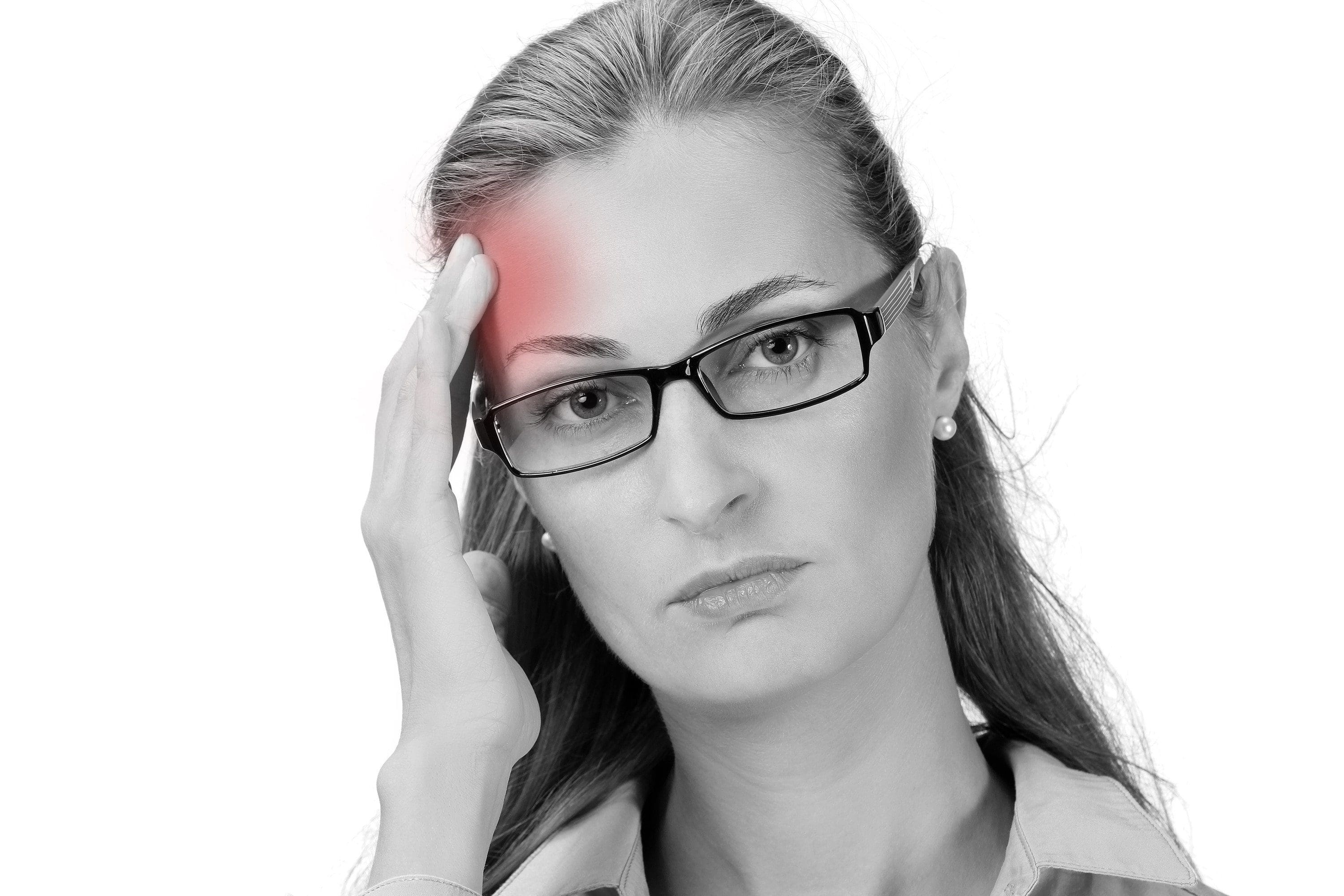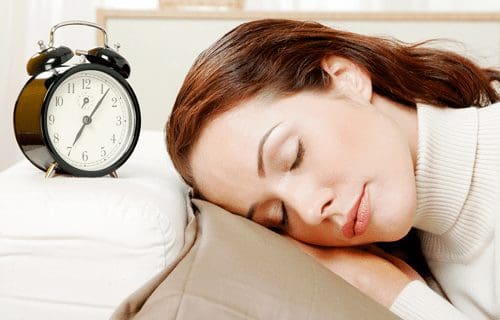Migraine Treatment˚
Table of Contents
Chiropractic Migraine Headache Pain Treatment in El Paso, TX
Migraine Treatment: A migraine is a debilitating neurological condition characterized by chronic headache pain. Many people frequently seek medical attention for migraines, however, some healthcare professionals may often prescribe pain drugs and/or medications for migraine headaches. Pain killers can cause undesirable side effects if not utilized properly. Research studies have demonstrated that chiropractic care can be a safe and effective migraine treatment option. The purpose of chiropractic migraine headache pain treatment is to prevent migraines as well as decrease the frequency of attacks.
Migraine Facts
According to the Migraine Research Foundation, migraine is the 3rd most prevalent illness in the world. Approximately 12 percent of the population, including children, suffers from migraines, where nearly 1 in 4 United States households includes someone who experiences debilitating headaches. Migraines can cause intense throbbing pain or a severe pulsing sensation, generally on one side of the head. Common symptoms include nausea, vomiting, and sensitivity to light and sound. Other common symptoms include aura in vision or distorted vision, dizziness, lightheadedness, irritability, nasal congestion, and scalp tenderness. Symptoms may vary from person to person, and not everyone will experience all the symptoms mentioned above. Furthermore, some people may experience mild and/or moderate pain and have less frequent attacks than others.
Chiropractic Migraine Headache Pain Treatment
Dr. Alex Jimenez is an experienced and qualified chiropractor who specializes in migraine treatment through the use of spinal adjustments and manual manipulations, among other chiropractic methods and techniques. Chiropractic care focuses on treating the source of the issue rather than treating the symptoms alone. In addition, Dr. Alex Jimenez may recommend lifestyle modifications, including nutritional advice as well as exercise and physical activity guidance, to promote further relief. According to several research studies, chiropractic care can be a safe and effective migraine headache pain treatment.
The Purpose of Chiropractic Migraine Headache Treatment is:
- To reduce the frequency of attacks
- To avoid the use of drugs and/or medications
- To prevent future migraines
- To decrease the debilitating symptoms
- To improve overall health and wellness
A migraine is caused by changes in the nervous system. Migraine headaches consist of severe throbbing pain or pulsating pain. This usually occurs on one side of the head. Migraines often begin in childhood, adolescence, or early adulthood.
They can be accompanied by:
- Extreme Sensitivity to Light & Sound
- Nausea
- Vomiting
Pain associated with migraines can last for hours, days and can be so intense that the pain is disabling.
Medications can help prevent some migraines and make them less painful. Talk to a doctor about different migraine treatment options. The right medicines, combined with self-help remedies and lifestyle changes, can help.
Symptoms

- Migraines can go through 4 phases: Prodrome, Aura, Headache or (Attack phase) and Postdrome or (Recovery phase).
- Prodrome – aka “Pre-headache,” can begin hours or days before the following phases. It can be helpful because it can serve as a warning of an oncoming attack.
Prodrome symptoms can include:
- Aphasia – Difficulty Finding Words and/or Speaking
- Constipation and/or Diarrhea
- Difficulty Concentrating
- Excessive Yawning
- Fatigue
- Food Cravings
- Hyperactivity
- Increased Frequency of Urination
- Mood Change
- Neck Pain
- Sleepiness
- Aura – Visual symptoms are the best known, but there are other possible symptoms. The aura phase can also serve as a warning and, in some cases, allow migraine treatment early enough to stop it before it moves on to the headache phase.
Aura symptoms can include:
- Alice in Wonderland Syndrome: This is a rare form of Migraine aura where the distinctive symptom is a type of metamorphosis or distortion of body image and perspective. While it’s occurring, it is not real. This syndrome can happen at any age, but it is more common in children.
- Allodynia: Hypersensitivity to feeling and touching to the point that what is considered normal is actually painful
- Aphasia
- Auditory Hallucinations: Hearing sounds that are not there
- Confusion
- Decrease of hearing/Loss of hearing
- Dizziness
- Hemiplegia: One-sided paralysis (happens in hemiplegic Migraines only)
- Olfactory Hallucinations: Smelling odors that are not there
- One-sided motor weakness (happens in hemiplegic Migraines only)
- Paraesthesia: Prickling, stinging, burning, numbness, and/or tingling, most commonly happen to the extremities or face
- Vertigo: Sensation of whirling or spinning not like dizziness
Aura Visual symptoms can include:

-
- Wavy lines (sometimes described like heat rising from the road)
- Blank or tiny blind spots
- Blurry vision
- Partial loss of sight
- Phosphenes: Brief flashes of light that streak across the field of vision
- Scotoma: Decreased or lost vision. Some people describe scotoma as having tiny blank spots in their vision. Some compare it to tiny snowflakes.
- Unilateral or One-sided (happens in Retinal Migraines only)
Headache phase symptoms can include:

The trigeminal nerve becomes inflamed during a migraine; pain may occur around the eyes, the sinus area, teeth, and jaw.
- Confusion
- Dehydration
- Depression, anxiety, panic
- Diarrhea or constipation
- Dizziness
- Duration of four to 72 hours in adults, one to 72 hours in children
- Fluid retention
- Headache
- Hot flashes and/or chills
- Nasal congestion and/or runny nose
- Nausea and/or vomiting
- Neck pain
- Osmophobia (heightened sensitivity to odors)
- Physical activity makes it worse.
- Phonophobia (heightened sensitivity to sound)
- Photophobia (heightened sensitivity to light)
- Pulsating or throbbing pain
- Usually unilateral (one-sided). But headaches can shift from one side to the other, become bilateral (on both sides), or be completely bilateral
- Vertigo
- Postdrome – This is known as the hangover phase. Symptoms can last hours or a couple of days.

Postdrome symptoms can include:
- Fatigue
- Feelings of well-being and euphoria
- Lowered intellect levels
- Lowered mood levels, depression
- Poor concentration and comprehension
Not everyone goes through all of the stages, and each phase can vary in length and severity.
Diagnosis

If migraines exist in family history, a headache doctor (neurologist) can diagnose the migraines based on medical history, symptoms, and physical and neurological examination.
A doctor may also recommend additional tests to rule out other possible causes of head pain if the condition is unusual, complex, or suddenly becomes severe.
Blood tests: A doctor will order these to test for blood problems, infections in the spinal cord or brain, and toxins in the system.
Computerized Tomography (CT) Scan: A CT scan combines a series of X-rays to create detailed cross-sectional images of the brain. This helps in diagnosing tumors, infections, brain damage, bleeding in the brain, and other possible medical problems that could be causing headaches.
Magnetic Resonance Imaging (MRI): An MRI produces detailed images of the brain and blood vessels. MRI scans help diagnose tumors, strokes, bleeding in the brain, infections, and other brain/nervous system (neurological) conditions.
Spinal tap (lumbar puncture): A doctor may recommend a spinal tap (lumbar puncture) if they suspect an infection, bleeding in the brain or other underlying condition. A thin needle is inserted between two vertebrae in the lower back to remove a sample of cerebrospinal fluid for analysis.
Migraine Treatment Options

Various types of migraine treatment options can help stop symptoms and prevent future attacks.
Medications have been designed to treat migraines. Some drugs often used to treat other conditions can also help relieve or prevent migraines. Medications used to combat migraines fall into two categories:
Pain-relieving medications: These are also known as an acute or abortive treatments. These types of medications are taken during a migraine and are designed to stop symptoms.
Preventive medications: These types of medications are taken regularly, usually on a daily basis, to reduce the severity or frequency of the migraines.
A migraine treatment strategy depends on the frequency and severity of the headaches, degree of disability the headaches cause, and other medical conditions.
Some medications are not recommended when pregnant or breast-feeding. Some medications are not given to children. A doctor can help find the right medication.
Pain-Relieving Medications
Pain-relieving medications should be taken, as soon as signs or symptoms present themselves for best results. Resting or sleeping in a dark room after taking them can help, as well. These medications include:
Pain Relievers: Aspirin or Ibuprofen (Advil, Motrin IB) can help relieve mild migraines. Acetaminophen (Tylenol), can also help relieve mild migraines.
Drugs marketed specifically for migraines, such as the combination of acetaminophen, aspirin and caffeine (Excedrin Migraine), also can ease moderate migraine pain. These are not effective by themselves for severe migraines.
If taken too often or for long periods, it can lead to ulcers, gastrointestinal bleeding, and headaches caused by medication overuse.
The prescription pain reliever indomethacin may help thwart a migraine and is available in suppository form, which may be helpful if you’re nauseated.
Triptans: These medications are often used in treating migraines. Triptans make blood vessels constrict and block pain pathways in the brain.
Triptans effectively relieve the pain and other symptoms that are associated with migraines. They are available in pill, nasal spray, and injection form.
Triptan medications include:
- Almotriptan (Axert)
- Eletriptan (Relpax)
- Eletriptan (Relpax)
- Frovatriptan (Frova)
- Naratriptan (Amerge)
- Rizatriptan (Maxalt)
- Sumatriptan (Imitrex)
- Zolmitriptan (Zomig)
Side effects of triptans include injection site reactions, nausea, dizziness, drowsiness, and muscle weakness. They are not recommended for people with a risk of stroke and heart attack.
A single-tablet combination of sumatriptan and naproxen sodium (Treximet) has proved to be more effective in relieving migraine symptoms than by themselves.
Ergots: Ergotamine and caffeine medications (Migergot, Cafergot) are not as effective as triptans. Ergots are most effective for pain that lasts for more than 48 hours. They are most effective when taken after symptoms begin.
Ergotamine can worsen nausea and vomiting and can also lead to medication-overuse headaches.
Dihydroergotamine (D.H.E. 45, Migranal) is an ergot derivative that is more effective and has fewer side effects than ergotamine. Also less likely to lead to medication-overuse headaches. It’s available in nasal spray and injection.
Anti-nausea medications: Nausea medication is commonly combined with other medications. Usually prescribed medications are chlorpromazine, metoclopramide (Reglan), or prochlorperazine (Compro).
Opioid medications: Opioid medications are sometimes used to treat migraine pain for those who can’t take triptans or ergots. Narcotics are habit-forming and are usually used only if no other migraine treatment provides relief.
Glucocorticoids (prednisone, dexamethasone): A glucocorticoid may be used with other medications to improve pain relief. However, glucocorticoids should not be used often to avoid side effects.
Preventive Medications
Candidates for preventive therapy:
- Attacks last more than 12 hours
- Experience four or more debilitating attacks a month
- Migraine signs and symptoms include a prolonged aura and/or numbness and weakness
- Pain-relieving medications are not helping
Preventive medications can reduce the frequency, severity and length of migraines and can increase the effectiveness of symptom relieving medicines used during attacks. It can take several weeks to see improvements in symptoms.
A doctor may recommend daily preventive medications, or only when predictable triggers, i.e. menstruation are about to happen.
Preventive medications don’t stop headaches completely, and some cause serious side effects. If preventive medicines are working and keeping migraines under control then a doctor may recommend tapering off the medication to see if migraines return without it.
The most common preventive medications include:
Cardiovascular Medications: Beta blockers, which are commonly used to treat high blood pressure and coronary artery disease, may reduce the frequency and severity of migraines.
Beta blockers propranolol (Inderal LA, Innopran XL) metoprolol tartrate (Lopressor) and timolol (Betimol) have proven effective for migraine prevention. Other beta blockers can also be used for migraine treatment. One might not notice improvement in symptoms for several weeks after taking these.
If older than age 60, use tobacco, or have heart or blood conditions, a doctor may recommend a different medication.
A different class of cardiovascular medications (calcium channel blockers), which are used to treat high blood pressure can also be helpful in preventing migraines and relieving symptoms. Verapamil (Calan, Verelan) is a calcium channel blocker that can help prevent migraines with aura.
The angiotensin-converting enzyme inhibitor lisinopril (Zestril) can be used to reduce the length and severity of the migraines.
Antidepressants: Tricyclic antidepressants may be effective in preventing migraines, even in those that are not depressed.
Tricyclic antidepressants can reduce frequency of migraines by affecting the level of serotonin and other chemicals in the brain. Amitriptyline is the only tricyclic antidepressant proven to effectively prevent migraines. Other tricyclic antidepressants can be used as they contain fewer side effects than the amitriptyline.
Side effects of these medications are sleepiness, dry mouth, constipation, weight gain and other side effects.
Antidepressant known as selective serotonin re-uptake inhibitors has not been proven to be effective for migraine prevention and can even worsen or trigger headaches.
Research has shown one serotonin and norepinephrine re-uptake inhibitor, venlafaxine (Effexor XR), can be helpful in migraine prevention.
Anti-Seizure Medications: Some anti-seizure medications, such as valproate (Depacon) and topiramate (Topamax), seem to reduce the frequency of migraines.
High doses of anti-seizure medications can cause side effects. Valproate sodium can cause nausea, tremors, weight gain, hair loss and dizziness. Valproate should not be used for pregnant women or women who may become pregnant.
Topiramate can cause diarrhea, nausea, weight loss, memory difficulty and concentration problems.
OnabotulinumtoxinA (Botox): Botox has shown to be helpful for treating chronic migraines in adults.
During this procedure, botox is injected into the muscles of the forehead and neck. The treatment is usually repeated every 12 weeks.
Pain Relieving Medications: Taking non-steroidal anti-inflammatory drugs, like naproxen (Naprosyn), can help prevent migraines and reduce symptoms.
Lifestyle & Home Migraine Treatment
 Self-care measures can help with migraine pain.
Self-care measures can help with migraine pain.
- Muscle relaxation exercises. Relaxation techniques can include muscle relaxation, meditation and/or yoga.
- Get the right balance of sleep every night, and make sure to go to bed and wake up at a consistent time.
- Rest and relax. Try to rest in a dark, quiet room when feeling a headache coming on.
- Place an ice pack wrapped in a cloth on the back of the neck and apply gentle pressure to the painful areas on the scalp.
- Maintain a headache diary. It will help to learn more about what triggers the migraines and what treatment is most effective.
Alternative Medicine Migraine Treatment

Non-traditional therapies can be helpful as well.
- Acupuncture can be helpful for headache pain. For this migraine treatment, a practitioner inserts thin, disposable needles into several areas at defined points.
- Biofeedback has shown to be effective in relieving migraine pain. This relaxation technique uses special equipment, which shows how to monitor and control physical responses related to stress.
- Massage Therapy can help reduce the frequency of migraines. Researchers continue to study the effectiveness of massage therapy in preventing migraines.
- Cognitive Behavioral Therapy can benefit some people with migraines. This type of psychotherapy teaches how behaviors and thoughts affect how pain is perceived.
- Herbs, Vitamins and Minerals evidence has shown that the herbs feverfew and butterbur can prevent migraines and/or reduce their severity. However, Butterbur is not recommended because of long-term safety concerns.
A high dose of riboflavin (vitamin B-2) can also prevent migraines or reduce the frequency.
Coenzyme Q10 supplements can decrease the frequency of migraines, but is still being studied.
Some people have low magnesium levels, magnesium supplements have been used to treat migraines, but with mixed results.
Ask a doctor about these migraine treatment options. Don’t use feverfew, riboflavin or butterbur if pregnant or without first talking with a doctor.
Chiropractic Migraine Treatment
Chiropractic treatment for migraines consists of moving, stretching and manipulating the spine. Chiropractic treatment does not use medication or surgery, but uses X-rays and other examinations to analyze how the spine is and how an adjustment might impact the patient’s health. Chiropractic treatment implements devices like shoe inserts, braces, straps and other tools. Chiropractic treatment also includes advice on lifestyle issues i.e. exercise, nutrition and stress management.
A study examined chiropractic treatment for various types of headaches, including migraines. The study combined the results of 22 studies, which contained more than 2,600 patients. The studies showed that chiropractic treatment can serve, as a well as, preventive treatment.
Another study found that 22% of people who had chiropractic treatment saw the number of attacks drop 90%. Within that same study, 49% had significant reduction in pain intensity.
Possible Side Effects
- Discomfort where manipulation took place
- Increased pain
- Stiffness
- Temporary headaches
- Tiredness
Serious Side Effects
In rare cases, chiropractic treatment side effects include:
- Artery damage
- Bleeding between the brain and the skull
- Damage to the spinal cord
If there is dizziness, vertigo, nausea or loss of consciousness after receiving chiropractic treatment seek immediate medical attention.
- Before seeking chiropractic treatment, talk to a doctor about all medications and supplements being taken as chiropractic manipulation could interact with medications.
- Get approval from a doctor after spinal surgery
- Pregnant women should talk to a doctor before chiropractic migraine treatment
Contact Our Office Today
If you suffer from migraine headache pain, chiropractic care can help improve your quality of life by providing you with the relief you need for your specific health issue. Chiropractic care can help the body naturally heal itself by carefully correcting a spinal misalignment, or subluxation, restoring the original structure and function of the spine. Dr. Alex Jimenez and his staff aspire to provide overall health and wellness to all of his patients, making sure to treat his patients as a whole, rather than focusing on a single injury and/or condition. Contact our office today to learn more about what chiropractic care can do for you or contact us to set up an appointment. With chiropractic care, you will be able to return to your original life in no time.
El Paso Wellness Clinic: Migraine & Chronic Pain Treatment
Post Disclaimer
Professional Scope of Practice *
The information on this blog site is not intended to replace a one-on-one relationship with a qualified healthcare professional or licensed physician and is not medical advice. We encourage you to make healthcare decisions based on your research and partnership with a qualified healthcare professional.
Blog Information & Scope Discussions
Welcome to El Paso's Premier Wellness and Injury Care Clinic & Wellness Blog, where Dr. Alex Jimenez, DC, FNP-C, a board-certified Family Practice Nurse Practitioner (FNP-BC) and Chiropractor (DC), presents insights on how our team is dedicated to holistic healing and personalized care. Our practice aligns with evidence-based treatment protocols inspired by integrative medicine principles, similar to those found on this site and our family practice-based chiromed.com site, focusing on restoring health naturally for patients of all ages.
Our areas of chiropractic practice include Wellness & Nutrition, Chronic Pain, Personal Injury, Auto Accident Care, Work Injuries, Back Injury, Low Back Pain, Neck Pain, Migraine Headaches, Sports Injuries, Severe Sciatica, Scoliosis, Complex Herniated Discs, Fibromyalgia, Chronic Pain, Complex Injuries, Stress Management, Functional Medicine Treatments, and in-scope care protocols.
Our information scope is limited to chiropractic, musculoskeletal, physical medicine, wellness, contributing etiological viscerosomatic disturbances within clinical presentations, associated somato-visceral reflex clinical dynamics, subluxation complexes, sensitive health issues, and functional medicine articles, topics, and discussions.
We provide and present clinical collaboration with specialists from various disciplines. Each specialist is governed by their professional scope of practice and their jurisdiction of licensure. We use functional health & wellness protocols to treat and support care for the injuries or disorders of the musculoskeletal system.
Our videos, posts, topics, subjects, and insights cover clinical matters and issues that relate to and directly or indirectly support our clinical scope of practice.*
Our office has made a reasonable effort to provide supportive citations and has identified relevant research studies that support our posts. We provide copies of supporting research studies available to regulatory boards and the public upon request.
We understand that we cover matters that require an additional explanation of how they may assist in a particular care plan or treatment protocol; therefore, to discuss the subject matter above further, please feel free to ask Dr. Alex Jimenez, DC, APRN, FNP-BC, or contact us at 915-850-0900.
We are here to help you and your family.
Blessings
Dr. Alex Jimenez DC, MSACP, APRN, FNP-BC*, CCST, IFMCP, CFMP, ATN
email: coach@elpasofunctionalmedicine.com
Licensed as a Doctor of Chiropractic (DC) in Texas & New Mexico*
Texas DC License # TX5807
New Mexico DC License # NM-DC2182
Licensed as a Registered Nurse (RN*) in Texas & Multistate
Texas RN License # 1191402
ANCC FNP-BC: Board Certified Nurse Practitioner*
Compact Status: Multi-State License: Authorized to Practice in 40 States*
Graduate with Honors: ICHS: MSN-FNP (Family Nurse Practitioner Program)
Degree Granted. Master's in Family Practice MSN Diploma (Cum Laude)
Dr. Alex Jimenez, DC, APRN, FNP-BC*, CFMP, IFMCP, ATN, CCST
My Digital Business Card



